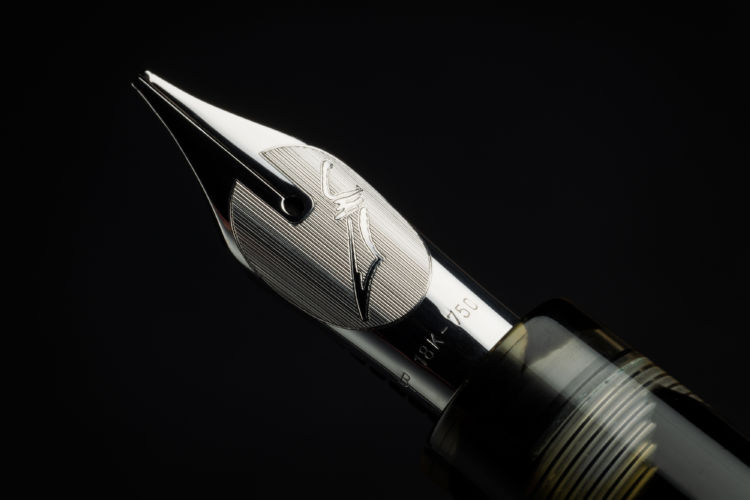Fountain pens are basically a tube with an ink chamber at the top and a nib at the bottom. Getting the ink from the chamber to the nib to the page in an orderly fashion is the trick!

So, how does the pen ensure the ink flows steadily onto the page? There are 3 processes involved that need to be kept in balance:
Gravity:
That’s why we hold the pen with the nib at the bottom. The ink in the chamber is in contact with the feed tube allowing:-
Capillary Action:
This is the process which causes liquids to flow along narrow channels (works well for plants getting nutrients and water from roots to leaves). It works in any direction – up, down and along , but in this case towards the nib. It is drawn down the narrow feed tube by capillary action, and similarly through the narrow space between the tines to the nib tip and thus onto the page. However, there is a problem!
Air pressure:
As the ink flows out onto the page, it will start to create a vacuum in the ink chamber. To prevent either the flow of ink to the nib ceasing or a disorderly exit of the ink (AKA a blot, splodge or burp) messing up your page, another small tube allows air back into the chamber.
Nibs: The Truth.
The bit of a pen nib that touches the paper isn’t gold, or steel. It’s usually called “iridium” – a very hard metal, which forms the tip on most good fountain pen nibs whether they are gold, steel, palladium or titanium. It is unlikely to be much affected by friction against paper. So, can we lend our fountain pens to other people without spoiling them for us? Well, maybe, but I’m not sure I would….

So why is a gold nib good?
The answer lies in the tines – the bit’s either side of the slit that carries the ink to the tip. They move, and the amount they move, and the way they move, affects the feel of the nib – think about a car with very hard suspension (a bumpy ride) very springy suspension (a bouncy ride) and suspension that is just right: Steel will tend to one of the extremes, but gold will give a more comfortable ride.
Most gold nibs will use 14, 18 or 21ct gold.
A gold Flex nib will usually be made 14ct gold: the other 10 parts will contribute to it’s feel and flexibility, as will the shape and thickness and, finally, the way in which it is annealed (that is, heat and allowed it to cool slowly, in order to remove internal stresses and toughen it).
